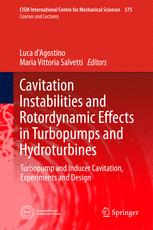

Most ebook files are in PDF format, so you can easily read them using various software such as Foxit Reader or directly on the Google Chrome browser.
Some ebook files are released by publishers in other formats such as .awz, .mobi, .epub, .fb2, etc. You may need to install specific software to read these formats on mobile/PC, such as Calibre.
Please read the tutorial at this link: https://ebookbell.com/faq
We offer FREE conversion to the popular formats you request; however, this may take some time. Therefore, right after payment, please email us, and we will try to provide the service as quickly as possible.
For some exceptional file formats or broken links (if any), please refrain from opening any disputes. Instead, email us first, and we will try to assist within a maximum of 6 hours.
EbookBell Team

4.4
32 reviewsThe book provides a detailed approach to the physics, fluid dynamics, modeling, experimentation and numerical simulation of cavitation phenomena, with special emphasis on cavitation-induced instabilities and their implications on the design and operation of high performance turbopumps and hydraulic turbines. The first part covers the fundamentals (nucleation, dynamics, thermodynamic effects, erosion) and forms of cavitation (attached cavitation, cloud cavitation, supercavitation, vortex cavitation) relevant to hydraulic turbomachinery, illustrates modern experimental techniques for the characterization, visualization and analysis of cavitating flows, and introduces the main aspects of the hydrodynamic design and performance of axial inducers, centrifugal turbopumps and hydo-turbines. The second part focuses on the theoretical modeling, experimental analysis, and practical control of cavitation-induced fluid-dynamic and rotordynamic instabilities of hydraulic turbomachinery, with special emphasis on cavitating turbopumps (cavitation surge, rotating cavitation, higher order cavitation surge, rotordynamic whirl forces). Finally, the third part of the book illustrates the alternative approaches for the simulation of cavitating flows, with emphasis on both modeling and numerical aspects. Examples of applications to the simulation of unsteady cavitation in internal flows through hydraulic machinery are illustrated in detail.